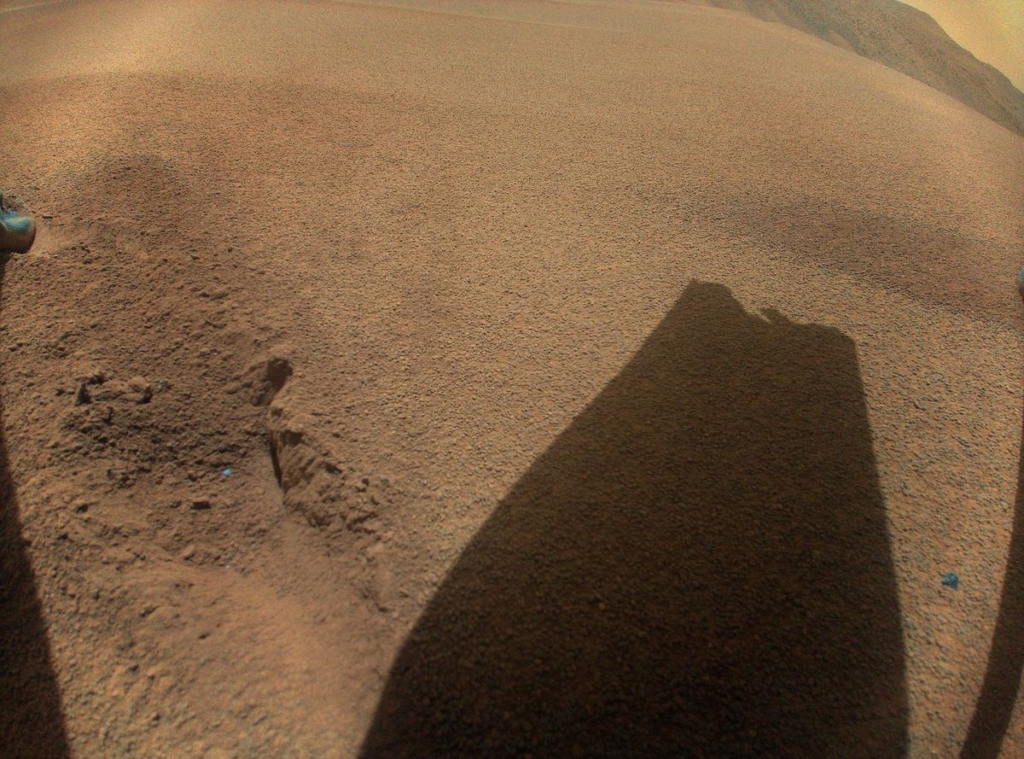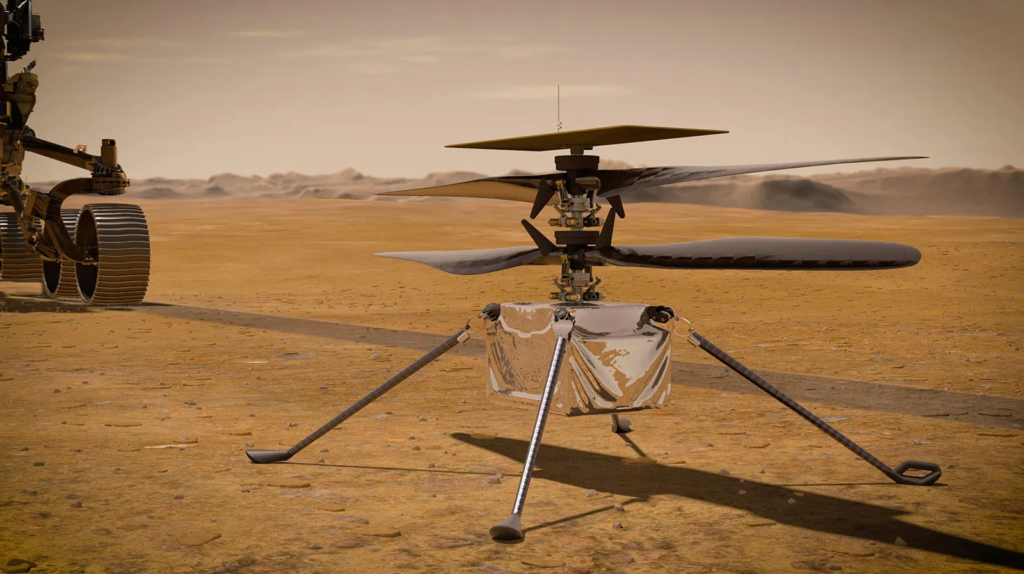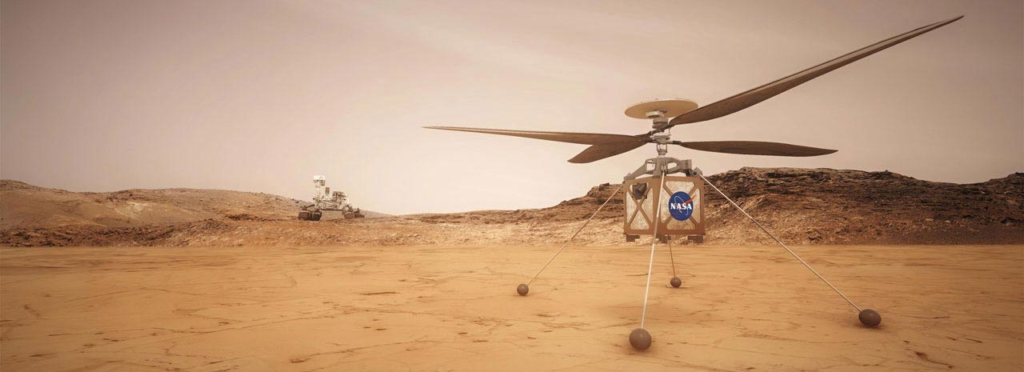
NASA’s Ingenuity Mars Helicopter Can No Longer Fly
After nearly 3 years of time on the Martain surface, the Ingenuity helicopter will never fly again. In a new report from NASA, the agency revealed that a recent flight and hard landing has damaged one of the rotors. The extent of the damage is enough to where Ingenuity would not be capable of any flights in the future, ending its mission.
In the time that it was on the red planet, Ingenuity has flown over two hours in total covering a distance of more than 11 miles (17km). It also served as an extremely valuable asset to the Mars rover which would determine routes based on what Ingenuity saw during its flights. Here I will go more in-depth into the helicopter’s damage, how the hard landing happened, what this means for the future, and more.
Hard Landing

Yesterday, NASA released a statement regarding Ingenuity’s condition and future. In a quote, they said, “NASA’s history-making Ingenuity Mars Helicopter has ended its mission at the Red Planet after surpassing expectations and making dozens more flights than planned. While the helicopter remains upright and in communication with ground controllers, imagery of its recent flight sent to Earth this week indicates one or more of its rotor blades sustained damage during landing, and it is no longer capable of flight.”
Specifically, on January 18th, the Helicopter executed its 72nd flight at the Red Planet. The flight was designed as a quick pop-up vertical flight to check out the helicopter’s systems, following an unplanned early landing during its previous flight. Here the agency said, “Data Ingenuity sent to the Perseverance rover (which acts as a relay between the helicopter and Earth) during the flight indicates it successfully climbed to its assigned maximum altitude of 40 feet (12 meters). However, they went on to say, “During its planned descent, communications between the helicopter and rover terminated early, prior to touchdown. The Ingenuity team is analyzing available data and considering next steps to reestablish communications with the helicopter.” At that point in time, teams were not sure the condition of the helicopter, all they knew was that communication had cut out early.
A few days later on the 20th, NASA reported that they reestablished communications with the Helicopter. At that point, they mentioned the next steps were to run further diagnostic checks, command Ingenuity to take photos of its location on the surface, and perform a spin test. Finally, NASA received images from the helicopter’s camera which revealed the true extent of damage. In the image, the shadow of one of the helicopter’s rotor blades can be clearly seen nearly broken in half.
In addition to the images, NASA also received more specific flight data which helped them determine what happened. Here they said, “Data shows that, as planned, the helicopter achieved a maximum altitude of 40 feet (12 meters) and hovered for 4.5 seconds before starting its descent at a velocity of 3.3 feet per second (1 meter per second). However, about 3 feet (1 meter) above the surface, Ingenuity lost contact with the rover, which serves as a communications relay for the rotorcraft.” To add to this, NASA officials made it clear that the terrain on this specific flight was extremely difficult to navigate. In a press briefing yesterday, the Ingenuity project manager said, “It’s some of the hardest terrain we’ve ever had to navigate over. It’s very featureless.”
Just earlier this month on the 6th, Ingenuity had trouble in the same area. In this case, it made an emergency landing cutting Flight 71 short because it couldn’t properly ground itself in its surroundings. This was also the case on the most recent and final flight. But this time, they believe Ingenuity came in at an angle and struck the red dirt with at least one of its rotors. Even though just one rotor blade is seen in the image and is obviously damaged, teams think that others likely hit the ground as well. In one last quote, a JPL Ingenuity pilot said, “It’s sort of been invincible until this moment, when we flew into this completely bland terrain where you just have nothing to really hold on to.
The agency pointed out that “With flight operations now concluded, the Ingenuity team will perform final tests on helicopter systems and download the remaining imagery and data in Ingenuity’s onboard memory. The Perseverance rover is currently too far away to attempt to image the helicopter at its final airfield.”
Ingenuity’s Contribution

Since Ingenuity’s first-ever powered flight, NASA has been keeping track of practically every metric possible and providing that information to the public. This flight log reveals years of work and a few important patterns can be seen. Starting Sol 58 and going all the way to Sol 1035, there have been a total of 72 confirmed flights. To get a better idea of how far this helicopter has actually flown, in total it traveled more than 17,000 meters or close to 56,000 feet. Its highest ever altitude was 24 meters off the ground and in total it flew over 2 hours long.
In addition to providing valuable insights on the operation of the helicopter itself, Ingenuity has also been working closely with the Perseverance Rover. Looking at maps provided by the agency, you can see both the rover and helicopter have stuck by each other’s side for practically the last few years. With Ingenuity now grounded, Perseverance has lost an incredibly valuable asset. The rover spent the first two Earth years of its mission on Mars driving and sampling within the Jezero crater. With this important work out of the way, the rover’s science team turned its attention to the prospect of new and exciting discoveries in the unexplored area on the Delta Top. To reach these areas as quickly as possible, the scientists planned an aggressive driving campaign up the river delta. The first stop in this race up the delta would be the Tenby region – home to some of the most geologically interesting outcrops of the delta.
This fresh terrain represented a golden opportunity for Ingenuity to prove its worth to the rover’s science mission. Providing the rover team with recon images just a few days before the rover reaches a site gives scientists significantly more time to determine their exploration priorities, and gives rover planners advanced notice of any unexpected terrain. At the time, with the fading of Martian winter, Ingenuity now had enough power to fly hundreds of meters ahead of the rover with each flight and deliver on the promise of being a real science scout.
It’s important to note that Ingenuity was actually meant to be a month-long demonstration and not a multi-year asset. The helicopter had lasted much longer than the agency anticipated and they decided to use it as much as possible. This also means that certain conditions and operations were not planned for and had to be adjusted while on Mars. Around one and a half years ago for example, on May 3rd 2022, Ingenuity’s team of engineers and scientists got their first hint of the hardship to come when they opened their comm logs to find radio silence. The small helicopter, sitting on a planet 240 million km (149 million miles) away, had run out of power while trying to keep itself warm during the cold Martian night. It likely happened in the early morning hours of Sol 426 (May 1st , 2022), a date roughly halfway between the Autumnal equinox and Winter Solstice on Mars. In other words, it was mid-November on the Martian surface.
Despite the overnight loss of power, the sun was still strong enough to revive the helicopter in the morning. This required the helicopter to generate enough electrical power to activate heaters, thaw out the frozen battery, and charge it sufficiently before bringing the avionics back to life. This process, performed by the “Lazarus circuit”, allows the helicopter to return to life after being effectively dead the night before. The overnight brownout, while not fatal, does reset the onboard clock, causing Ingenuity to lose all sense of time and forget to wake up as scheduled. Instead, the computer wakes up and attempts to talk to the rover 2 hours and 15 minutes after the initial power-on. The exact timing of this entire process is based on a complicated combination of fluctuating factors such as battery charge, wind, dust, and temperature. As each morning’s wakeup was different, the team had to use the helicopter base station on the rover to search for Ingenuity’s signal using a search window covering the predicted wakeup time. Only when a communications link was established could Ingenuity’s clock be synchronized to allow a scheduled activity later in the day.
Finally, on December 24th, 2022, Ingenuity did something it hadn’t done during the previous 260 sols – it slept “warmly” through the entire night. Data leading up to this event had suggested that such a survival was possible, but 8 long months of winter had tempered the team’s optimism. When Ingenuity’s team reviewed the downlinked data, they found that not only had it started living through the night, but had actually begun to bank power in its batteries. Enough to continue operations not long after. This was just one example of many where Ingenuity continued on despite unlikely conditions.
Conclusion
Ingenuity will never fly again after its most recent flight that ended with a crash landing. This damaged at least one of the helicopter’s main rotors, meaning Ingenuity no longer has the capability to fly. We will have to wait and see how it progresses and the impact it has on the space industry.
